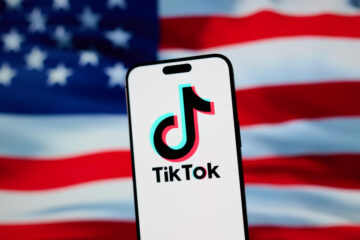Like many hobbies that revolve around a certain product fixation, a special breed of car enthusiast isn’t into the latest and greatest from the world’s automakers — they’re into the classics.
When you think about the kind of people who own classic cars, you probably think about your dad, grandpa, or jolly neighbor with a “pride and joy” that they only take out on nice days, Sundays in the spring or summer, or strictly on “special occasions.”
Personally, I remember a family friend who, before he passed, owned a red 1987 Chevrolet Corvette convertible. It was a car that he cherished and dedicated a lot of love to, and is one of the things that I remember him with.
But in today’s internet age, a new generation of car collectors, fanatics, and enthusiasts has emerged seeking to own their dream car from the pages of history, and the cars they want might not fit your idea of a “classic car.”
Recently, I spoke with two execs from Hagerty (HGTY) , classic car insurance specialists that have expanded into a full-on automotive lifestyle brand centered on classic cars.
Related: The most ‘American’ truck isn’t made by Detroit’s Big Three
The online shift
During the pandemic, collector cars shifted from physical auctions, like those at this RM Sotheby’s auction in Monterey, California, to those online.
According to Hagerty Automotive Intelligence vice president Brian Rabold, the classic and collector car market experienced a huge boom during the Covid-19 pandemic, the effects of which are still influencing the market today.
“Before the pandemic, things were pretty steady but not very active,” Rabold told TheStreet. “With the pandemic, for a number of reasons, all of a sudden, the collector car market just took off. We saw prices doubling year over year for a number of cars. That took probably about 18 months And then about 2022, in the summer of 2022, the market started to contract a little bit and slow down. That’s the phase that we’re in right now, is this adjustment to that post-pandemic boom.”
Ken Ahn, the president of Hagerty Marketplace & Radius, noted that with people locked inside and advised to keep their distance from other people, driving cars, working on cars, and dreaming about the cars they wanted became a pleasure activity that some people partook in.
But while some people ordered food, essential goods, and other items through digital means during this period, some people who had the means to spend on a dream car bought them in a new, different way.
“What [the pandemic] created was a interesting phenomenon with respect to buying and selling cars through digital means,” Ahn said. “Not only were people getting more and more comfortable with buying cars in the five, even six-figure, rarely even seven-figure cars, but also a lot of the business is adapted. Rather than having one or two or five photographs, 100 photos and images and sellers putting a video. We did see COVID not only changed during that time, the valuations changed quite a bit, but also the ways in which people buy and sell cars.”
With car buying much simpler and possible from the comfort of a buyer’s home, a new generation of car enthusiasts is spending their dollars on classics, but the cars they are buying aren’t exactly ‘classics’ in the traditional term.
The ‘New Classics’
A Nissan Skyline GT-R (R33). This particular GT-R was sold between 1995 and 1998, and is known for its appearance in video games like “Gran Turismo” and the 2001 film “The Fast and The Furious.”
Nissan Motor Co.
According to Rabold and Ann, younger Gen X and older millennials gravitate toward cars from their youth, vehicles from the 1980s and 90s that they may have seen in movies like The Fast and The Furious or played in video games like Gran Turismo.
Ahn explained that some of these cars that people were into as kids were once considered forbidden fruit to American buyers due to federal regulatory guidelines. However, thanks to the fine print of the rules, these cars can now be bought by young people in the United States.
“For those in the US, we have strict federalization rules. The way it works is that cars older than 25 years are importable without having done the old crash test or having to federalize them,” Ahn explained.
“Those regulatory environments do also factor in because now the ’80s and ’90s high-performance German [Mercedes-Benz] SL70 or [Nissan] Skyline GTR that weren’t available in the US are now importable. That just happens to be the perfect demographics of the Gen Xers now who saw those growing up, and now they can afford, a lot of them can afford it, and now you’re able to import them.”
Identifying a ‘Future Classic’
A 1989 Lamborghini Countach 25th Anniversary Edition at a RM Sotheby’s auction in New York City. This particular variation of Countach was featured on Hagerty’s 2024 Bull Market list, which features cars that it thinks will shoot up in price within the year.
Pacific Press/Getty Images
However, spotting which cars will be “future classics” can be near impossible. Hagerty publishes a list every year called the “Bull Market list,” as the name suggests, it consists of cars that the firm feels will have significant price gains.
Rabold says that they take “a very data-driven approach” that looks at trends in pricing, pricing compared to other cars in a similar era, and demographic data to see if a particular car will continue to attract younger and younger buyers.
However, both Rabold and Ann emphasize that cars are emotional purchases and that predicting why people buy a car can be challenging.
“A lot of this is emotional,” Ahn said. “Just like any collecting, if the value goes down, you feel less better, and if the value goes up, you feel even better about it.”
A market made from rule compliance
A Porsche 911 (993), made between 1994 and early 1998. This generation of Porsche 911 is sought out by collectors for being the last iteration featuring an air-cooled engine; ancient technology that was dropped to comply with emissions regulations.
Porsche
As tightening emissions regulations dictate a shift from traditional, gas-powered internal combustion engine cars to hybrids, plug-ins, and full battery-powered EVs, enthusiasts, car collectors, and technological nonbelievers alike will yearn for cars from “the good old days,” where a particular car did not have to comply with such rules.
However, at the same time, manufacturers are finding new and impressive ways to make their cars go even faster every day, which makes similar cars with older technology more desirable.
Ahn makes this case using manual transmissions as an example. Some manufacturers like Porsche and Ferrari have shied away from offering stick shifts in their sports cars, claiming that newfangled dual-clutch, paddle-shift automatics shift much faster than someone throwing around a gear lever.
A Ferrari 599 GTB in London. Examples of this car equipped with manual, ‘stick-shift’ transmissions command much higher asking prices due to their rarity, novelty and overall favorability to passionate enthusiasts.
It is true, but the decisions of these manufacturers can drive different behaviors in buyers. Some people embrace the technology, while others yearn for a more limited amount of “the old stuff,” which drives the price disparity of certain cars.
“You take a Ferrari 599, for example, an F1 automatic versus a manual; the price difference is multiples. Whereas when they were actually selling it new, it was actually at a discount, the automatic was the higher package, an option.”
More Automotive:
Maserati exec defends the use of a car feature drivers hateFeds are skeptical about the safety of popular driver-assist techYoung guys who like loud cars are likely to be psychopaths, study suggests
Related: Jay Leno shuts down EV skeptics in recent podcast appearance
Reflection
BMW enthusiasts inspect the front facia of a vintage BMW M3 Convertible (E30) at a Cars and Coffee event in Fort Lee, N.J.
James Ochoa
It is human to associate tastes, smells, feelings, music and inanimate objects with memories. It is also exciting to see how human behavior influences the collector car market as time goes on, as a new generation of people with disposable income goes on to look for their dream cars.
No matter the pace of life or the environment you live in, you become a product of it.
My dad’s dream car isn’t my dream car. We come from different times, have different priorities and viewpoints when it comes to cars, which come from wildly different experiences that we lived through.
Though each and every person is different, the idea of one’s dream car can only come from one of two places: the mind or the heart.
“I think at the end of the day, it’s still a mode of transportation, but I think most collectors view this as something beyond getting them from point A to point B,” Ahn said.
“This is something that they have an emotional attachment to old memories. It might be the same car that they went to their first high school prom, whatever it may be. I think that’s what it’s going to keep the hobby pretty vibrant.”
Related: Veteran fund manager picks favorite stocks for 2024


